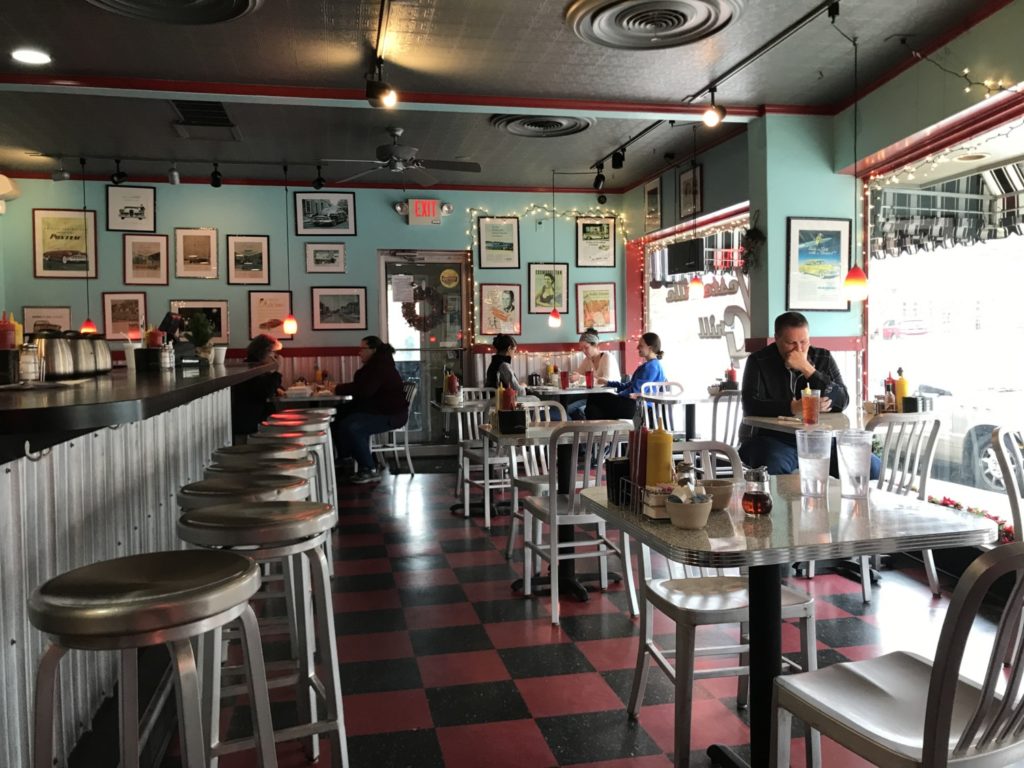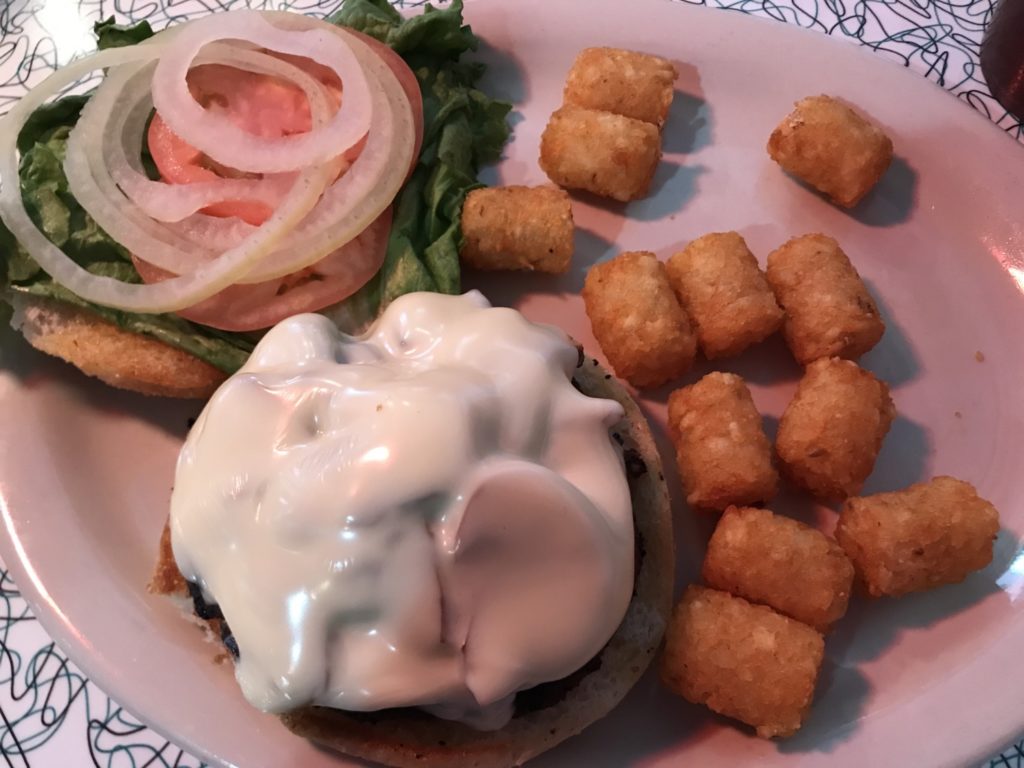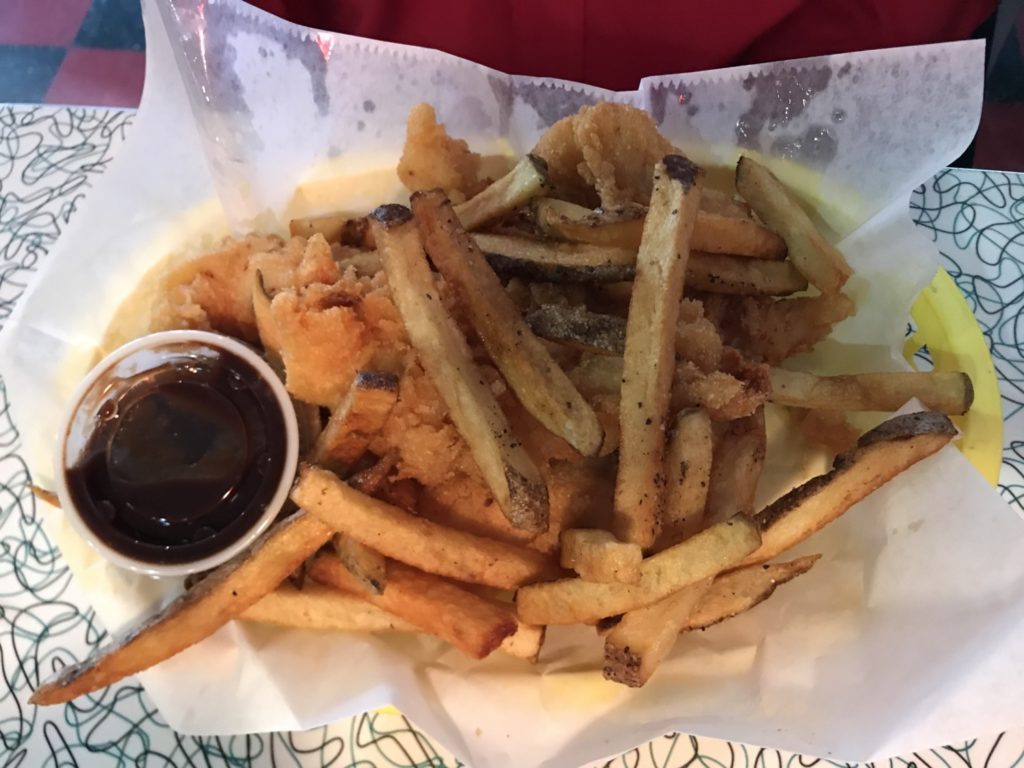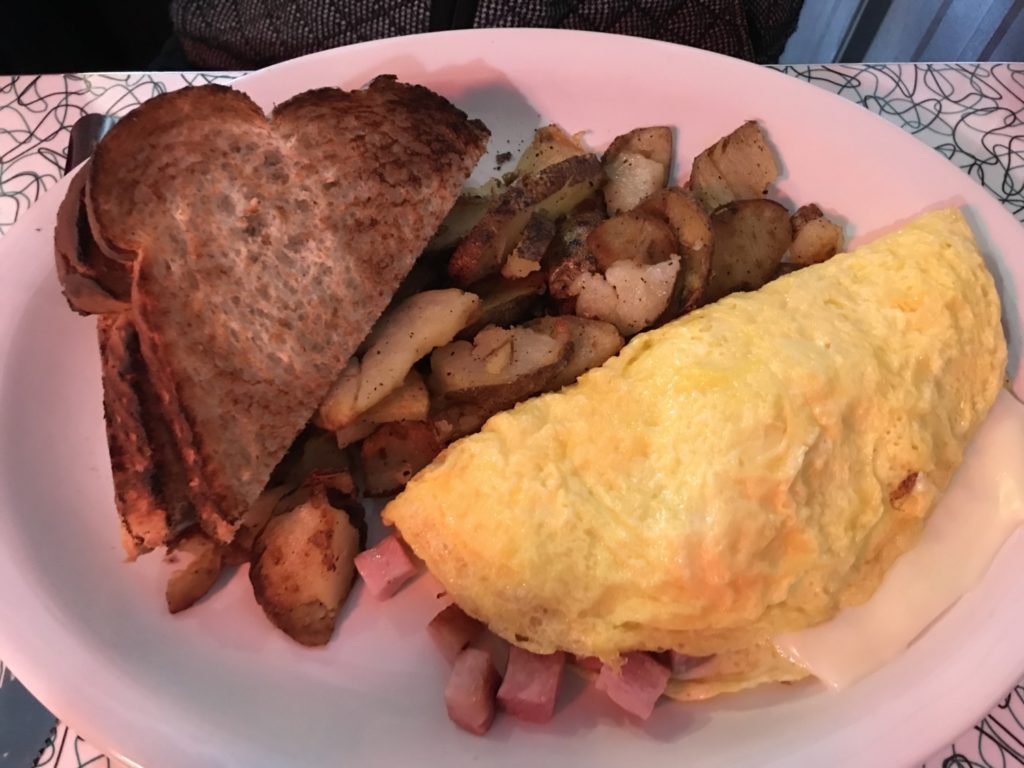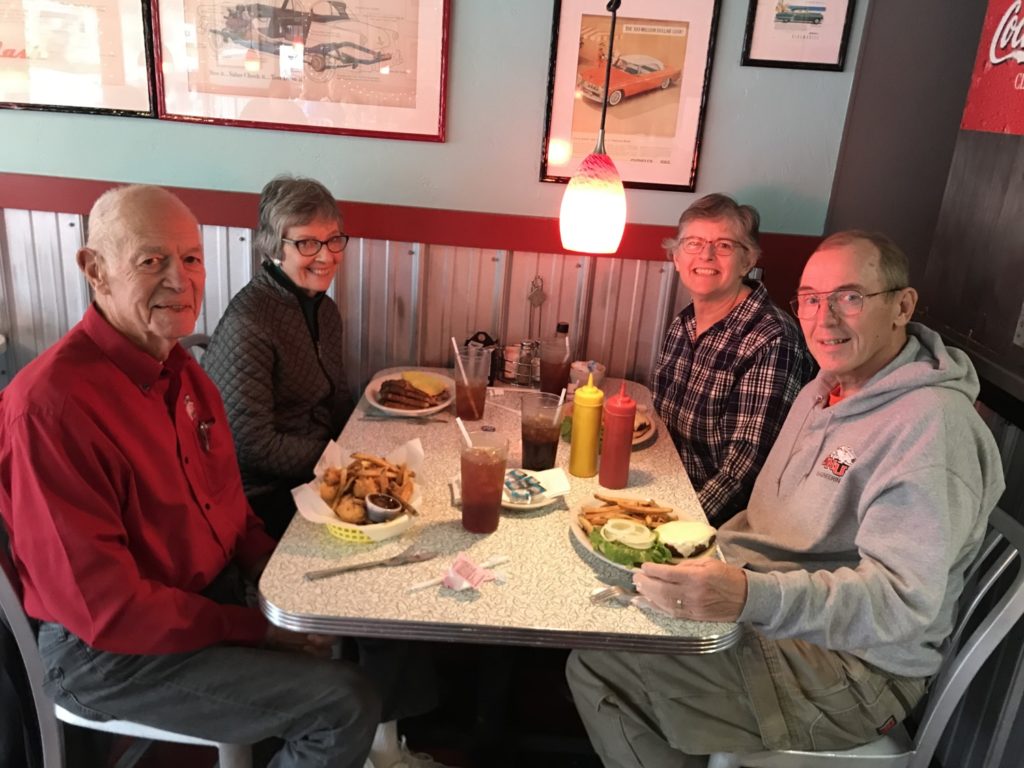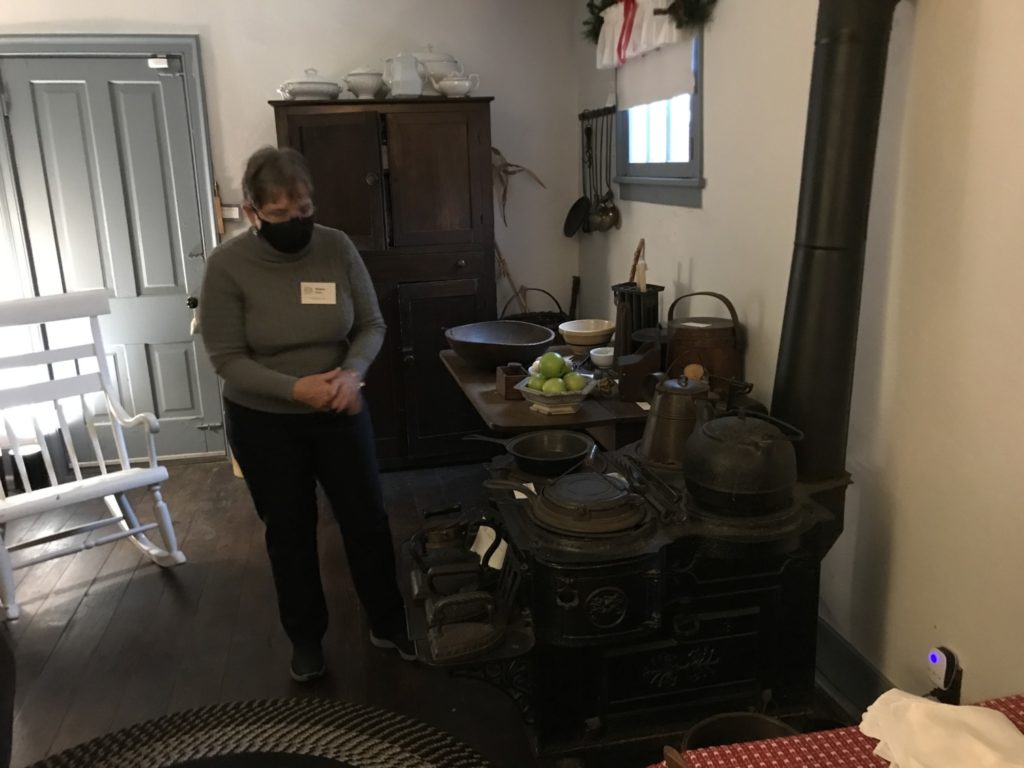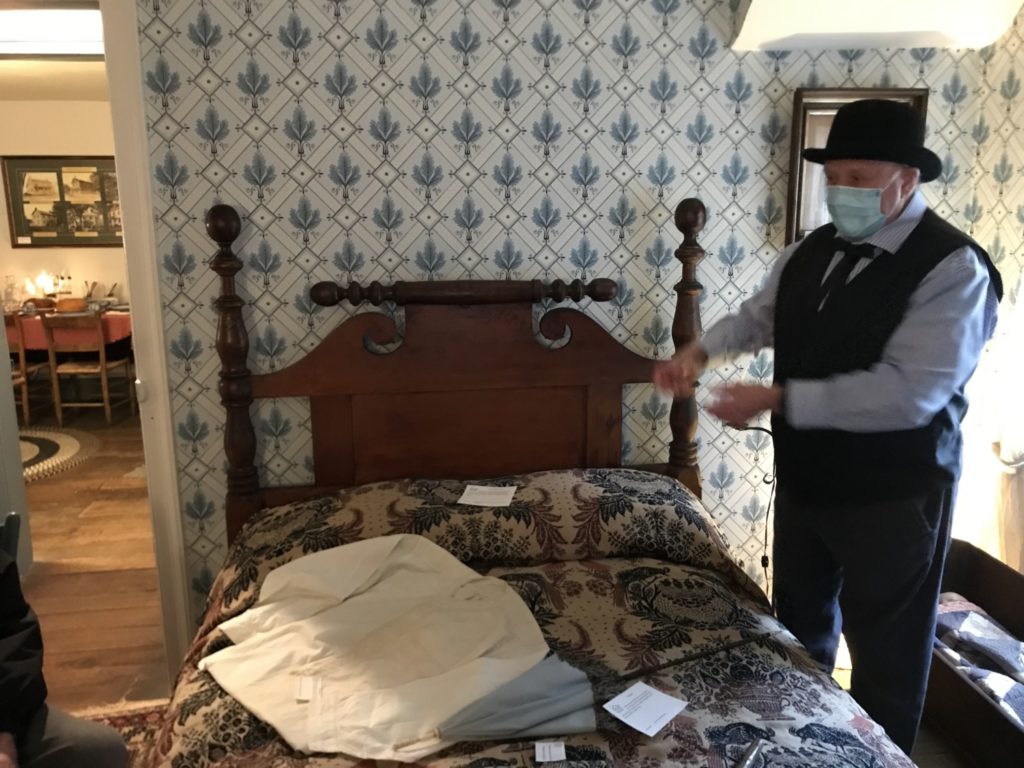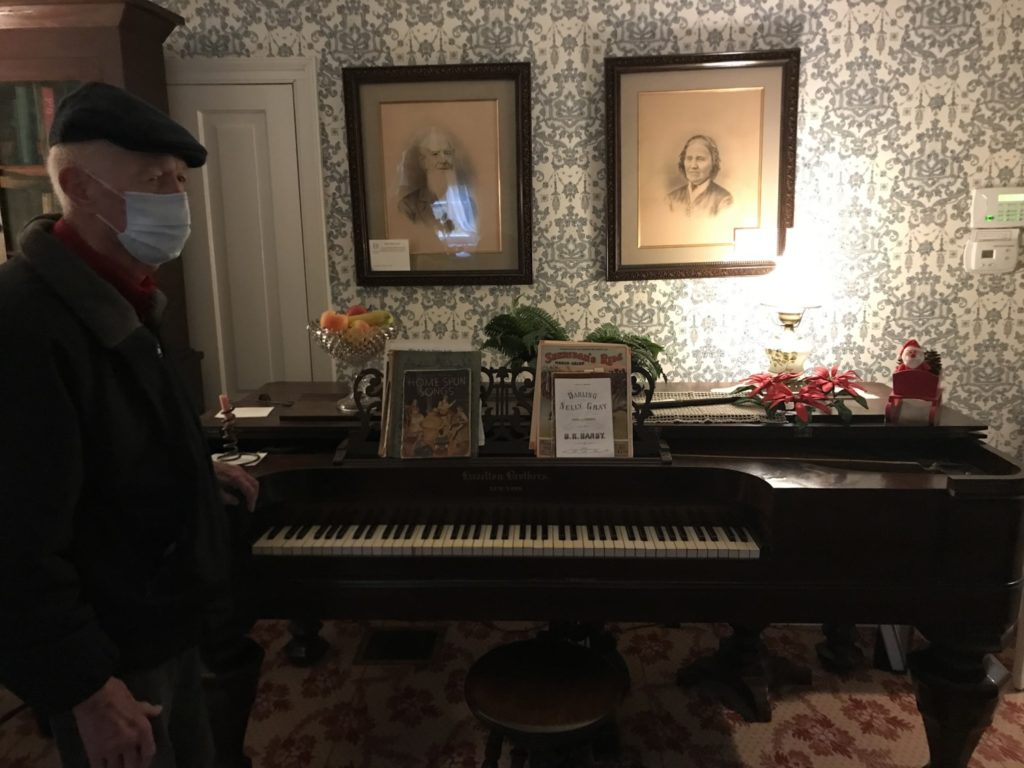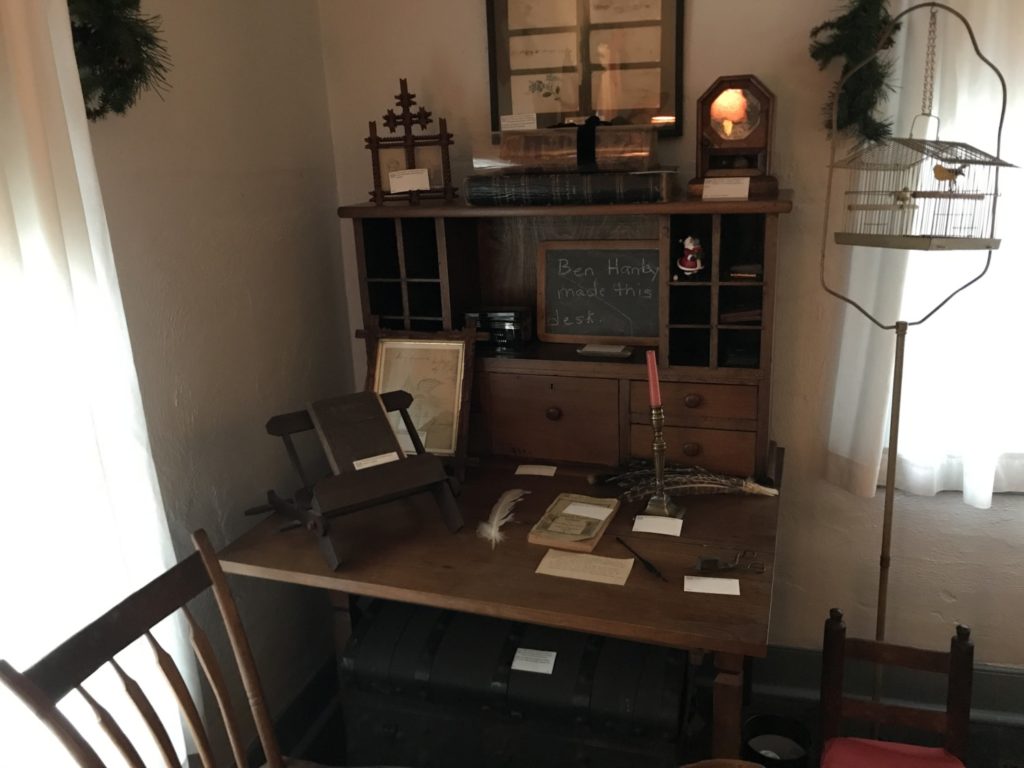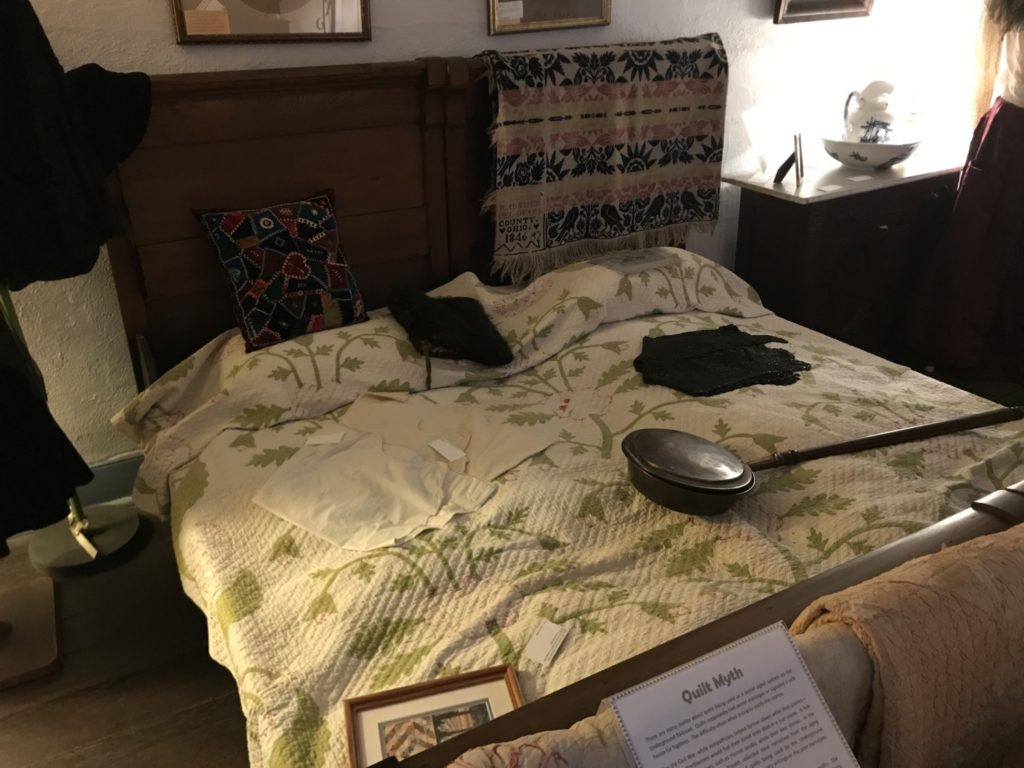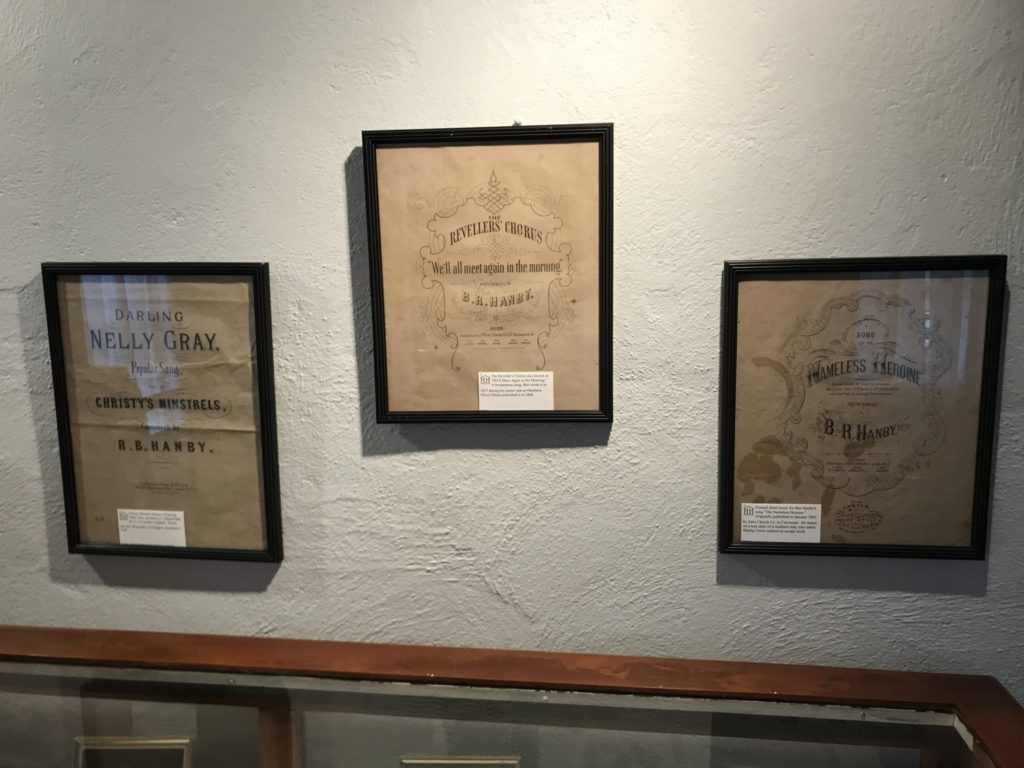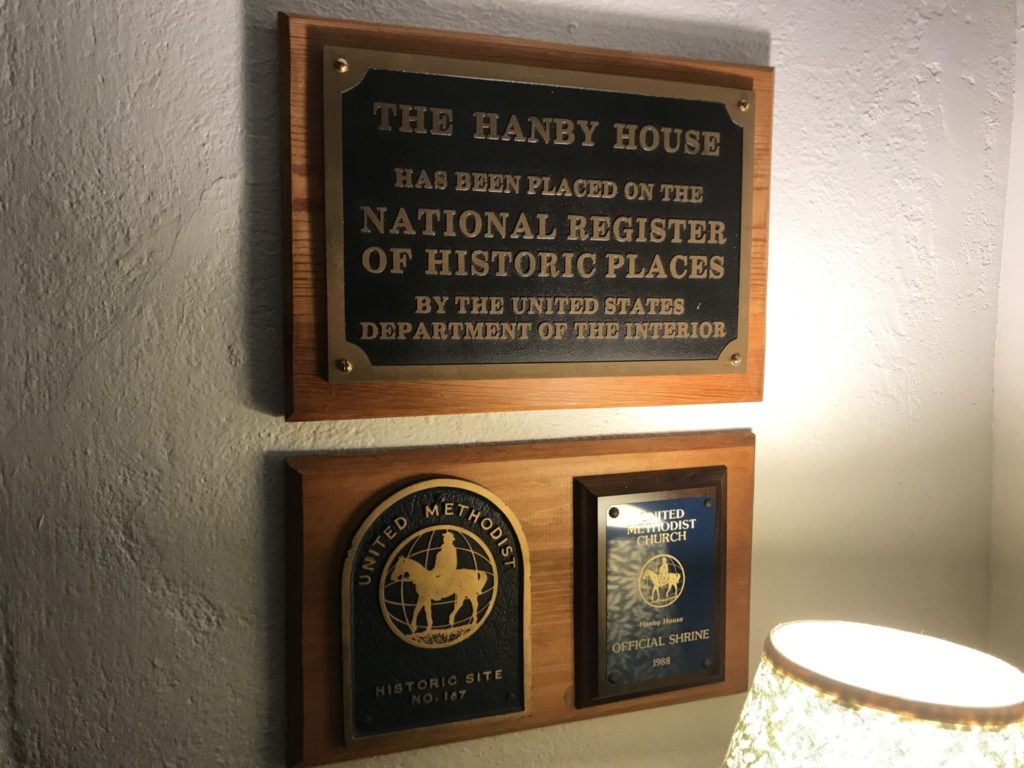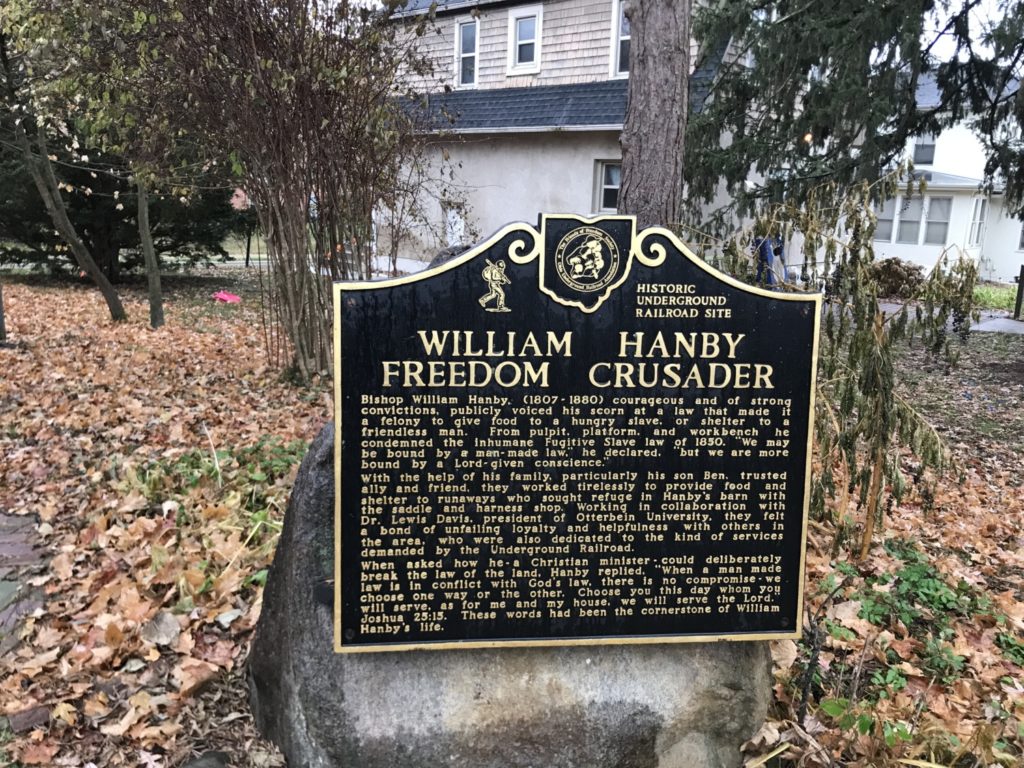After viewing the Van Gogh exhibit, the four of us headed for another adventure: a tour of the Hanby House Historic Site in Westerville, Ohio. First, however, we needed some fuel to continue our awesome adventure day.
We chose the Westerville Grill as the spot for lunch. Uptown Westerville has lots of cool looking places to eat, but Tom and I haven’t tried too many of them. Having Mom and Dad with us was a perfect excuse to go someplace new. We chose the Westerville Grill because the menu looked good and it had its own parking lot, something hard to find in Uptown Westerville.
The Westerville Grill bills itself as “a classic American diner located in the heart of historic Westerville.” And it really was. It had all the marks of a classic American diner, with stools at a long counter and linoleum covered tables. While we waited for our food, we enjoyed looking at the classic car ads hung all over the walls.
Like most diner waitresses, our waitress was fast and efficient. She brought our drinks and took our orders. Tom and I both ordered burgers – he got his with fries and I got mine with tots. Mom got an omelet and Dad ordered chicken tenders and fries. When the food came it was hot! I shouldn’t be surprised by that, but we actually had to let it cool down a little before we could eat it. Everything was fresh cooked and delicious. They had homemade pies, but all of us had “just right” portions so we were full without being stuffed. We will have to try the pie another time.
After being sufficiently fortified by lunch we headed for a 2 p.m. appointment at the Hanby House. The Hanby House is run by volunteers of the Westerville Historical Society. They have regular hours during their Christmas Open House but the rest of the time you have to make an appointment to see the house. I had called in November and received a prompt call back from the woman in charge of scheduling. It took several calls, but she stayed with it until we had a date acceptable to the volunteer docents and to us.

We met our two hosts at the Hanby House located on the grounds of Otterbein College and started with a video about the Hanbys. For those of you who aren’t familiar with the Hanbys, here is a brief history.
William Hanby was a United Brethren minister in Ohio. The United Brethren were part of the EUB church that joined with the Methodists to form the United Methodist Church in 1968. My parents were part of the EUB church, and before that, my grandparents were part of the United Brethren Church. So Hanby was a familiar name to them.
William Hanby became a United Brethren circuit rider in 1833 and traveled from settlement to settlement. In addition to being a traveling preacher, he also edited the “Religious Telescope,” a United Brethren newspaper. William was a strong abolitionist and very active in the underground railroad. He often traveled to the Ohio River to pick up freedom seekers and transport them to central Ohio. William was elected a Bishop in the United Brethren church in 1845 and helped to establish Otterbein University in Westerville. Otterbein was one of the first colleges in the United States to admit women and African-Americans.
In 1853 William began serving as the pastor of the Westerville United Brethren Church. After the Civil War, William turned his attention to temperance and became one of the founders of the Temperance Movement in the United States. William died in 1880.
But, as important to United Brethren history as William was, his oldest son Benjamin is the more famous Hanby. Benjamin Hanby was also a United Brethren pastor who was too liberal for all the churches he served. He continued to help his father hide and move freedom seekers and he was a staunch believer in equal rights for women and for people of color. Few people in his rural churches agreed with these stances.
Benjamin left ministry in 1864 to establish a singing school. He had always been musically gifted and had already written several songs. The first to be published was “Darling Nellie Gray” about a freedom seeker who had to leave his wife behind. His most famous song is “Up on the Housetop” which gets sung a lot at this time of year. Less familiar, but in the United Methodist Hymnal is “Who Is He in Yonder Stall?” Benjamin died of tuberculosis in 1867 at the age of 33.
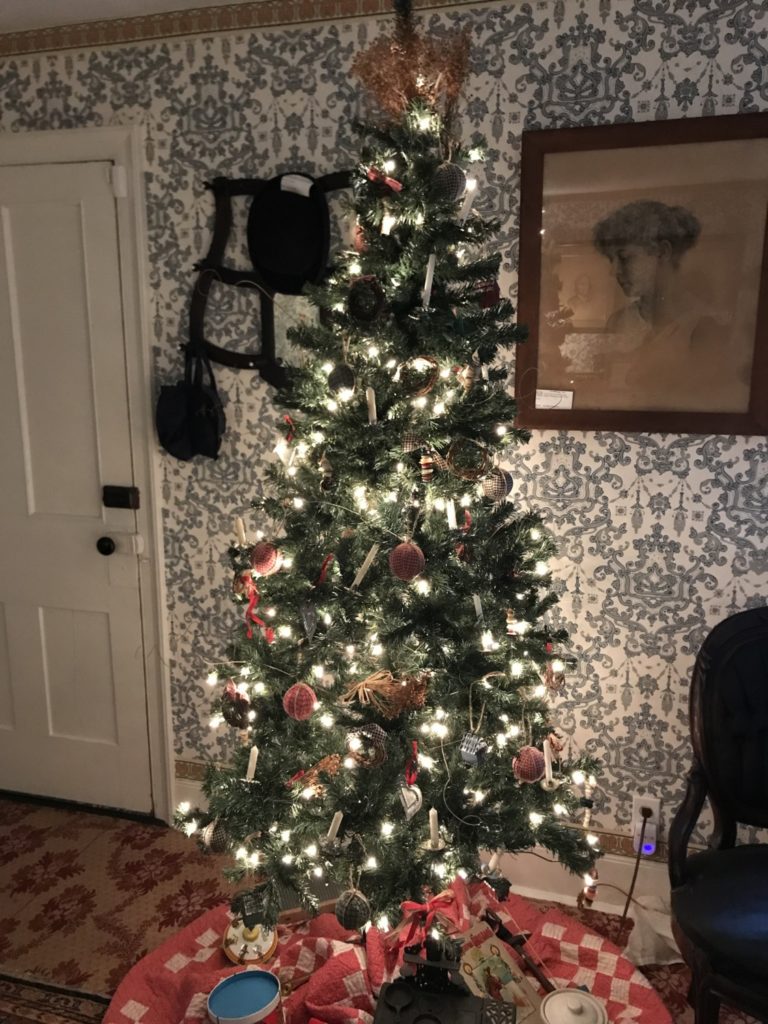
The Hanbys began living in the house in Westerville in the 1830’s. Over time, as it passed through different owners, the house deteriorated. It was bought and moved to its present location and then restored by the Westerville Historical Society. The house is furnished with some original Hanby items, but most of the furnishings are antiques from the 1850’s. The house has been placed on the National Register of Historic Places and designated a National Historic Landmark of the Underground Railroad by the National Park Service. It is also a United Methodist Historic Site and was designated a United Methodist Shrine in 1988. A United Methodist Shrine is “A building linked with significant events or outstanding personalities or both in the origin and development of The United Methodist Church.”
After we watched the excellent and informative movie, our hosts took us on a tour of the Hanby House. It looked like most old houses, except it had some artifacts and some music from the Hanby family. The living room was decorated with an “Up on the Housetop” Christmas tree. Many of the toys mentioned in the song were underneath it. Although there wasn’t a charge for the tour, we put a donation in the box in the kitchen.
We really enjoyed our tour and learning more about the Hanbys. We were inspired by their activism and their commitment to making a difference in their community. They lived out their faith and left a mark in history.


